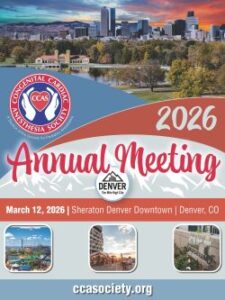Authors: Ahmed Zaghw, MD and Destiny F. Chau, MD - Arkansas Children’s Hospital/University of Arkansas for Medical Sciences, Little Rock, AR
A 55-year-old woman presents for urgent eye surgery. A review of systems reveals decreasing exercise tolerance and palpitations over the previous six months. No prior medical history is available. An echocardiogram demonstrates a secundum atrial septal defect (ASD). What is the MOST likely long-term complication associated with an unrepaired secundum ASD?
EXPLANATION
An atrial septal defect (ASD) allows for intracardiac shunting of blood. The direction of intracardiac shunting depends on the pressure gradient between atrial chambers, the compliance of the ventricles, and the resistance to blood flow which is largely determined by the size of the defect. A low-pressure gradient between the atria will result in a low volume shunt. Consequently, this leads to slow clinical progression and allows most patients to remain asymptomatic for many years, thereby delaying the diagnosis of ASD. The age when symptoms start is highly variable. Atrial septal defect is the most common congenital heart disease diagnosed in adults, accounting for 25-30% of new diagnoses. A 1970 study by Campbell that included patients with primum ASDs revealed mortality less than 1% in the first two decades of life; however, mortality sharply increases thereafter with 75% dying during the 3rd to 6th decades.
Over time, patients with an untreated ASD have decreased exercise tolerance, dyspnea and experience worsened cardiopulmonary outcomes. Exercise intolerance is the most common initial presenting symptom. Long-term complications include atrial arrhythmias, heart failure, thromboembolism, and pulmonary arterial hypertension. Long-standing atrial level shunting leads to volume overload and dilatation of right ventricle and atrium, which has a detrimental impact on left ventricular geometry and function. The left ventricle becomes less compliant with age and acquires diastolic dysfunction due to the increased volume load, which in turn increases the degree of atrial level shunting. Additionally, increased pulmonary blood flow may lead to pulmonary hypertension and to the development of pulmonary vascular disease.
The most common complications of longstanding right atrial dilation and stretch are atrial arrhythmias, with atrial fibrillation and atrial flutter being most common. Although atrial arrhythmias seldom occur before the age of 40, greater than 50% of patients over the age of 60 experience atrial fibrillation and up to 20% experience atrial flutter. Atrial tachyarrhythmias may accelerate chronic heart failure and lead to decompensation, particularly in older patients.
Pulmonary hypertension (PH) is relatively rare even in patients with large unrepaired ASDs. Severe PH, along with Eisenmenger syndrome, is reported to occur in 5-10% of patients with unrepaired ASD. Patients with both repaired and unrepaired ASDs are at a higher risk of thromboembolic complications, such as stroke. In patients with unrepaired ASD, the frequency of stroke is 4% due to paradoxical embolization. The frequency of stroke in patients with repaired ASDs is 1.4%. Stoke in this patient population is thought to be related to atrial fibrillation or pulmonary vein remodeling after ASD closure. Anticoagulation for six to twelve months after ASD closure in older patients is recommended, regardless of the presence of an atrial arrhythmia.
The 2018 American Heart Association guidelines recommend ASD closure during childhood or early adulthood prior to the occurrence of symptoms. Older adults need to be evaluated for pulmonary hypertension and Eisenmenger syndrome prior to ASD closure. The goal of closure is to prevent further clinical deterioration, while managing the longstanding incurred complications such as arrhythmia and heart failure. In most patients, functional capacity often improves after ASD closure. In patients with unrepaired ASD, the most prevalent long-term complication is atrial tachyarrhythmia. The patient described in the stem has symptoms consistent with an atrial tachyarrhythmia.
REFERENCES
Webb G, Gatzoulis MA. Atrial septal defects in the adult: recent progress and overview. Circulation. 2006;114(15):1645-1653. doi:10.1161/CIRCULATIONAHA.105.592055
Brida M, Chessa M, Celermajer D, et al. Atrial septal defect in adulthood: a new paradigm for congenital heart disease. Eur Heart J. 2022;43(28):2660-2671. doi:10.1093/eurheartj/ehab646
Campbell M. Natural history of atrial septal defect. Br Heart J. 1970;32(6):820-826. doi:10.1136/hrt.32.6.820
Stout KK, Daniels CJ, Aboulhosn JA, et al. 2018 AHA/ACC Guideline for the Management of Adults with Congenital Heart Disease: Executive Summary: A Report of the American College of Cardiology/American Heart Association Task Force on Clinical Practice Guidelines [published correction appears in J Am Coll Cardiol. 2019 May 14;73(18):2361]. J Am Coll Cardiol. 2019;73(12):1494-1563. doi:10.1016/j.jacc.2018.08.1028
